asymmetrical intersections

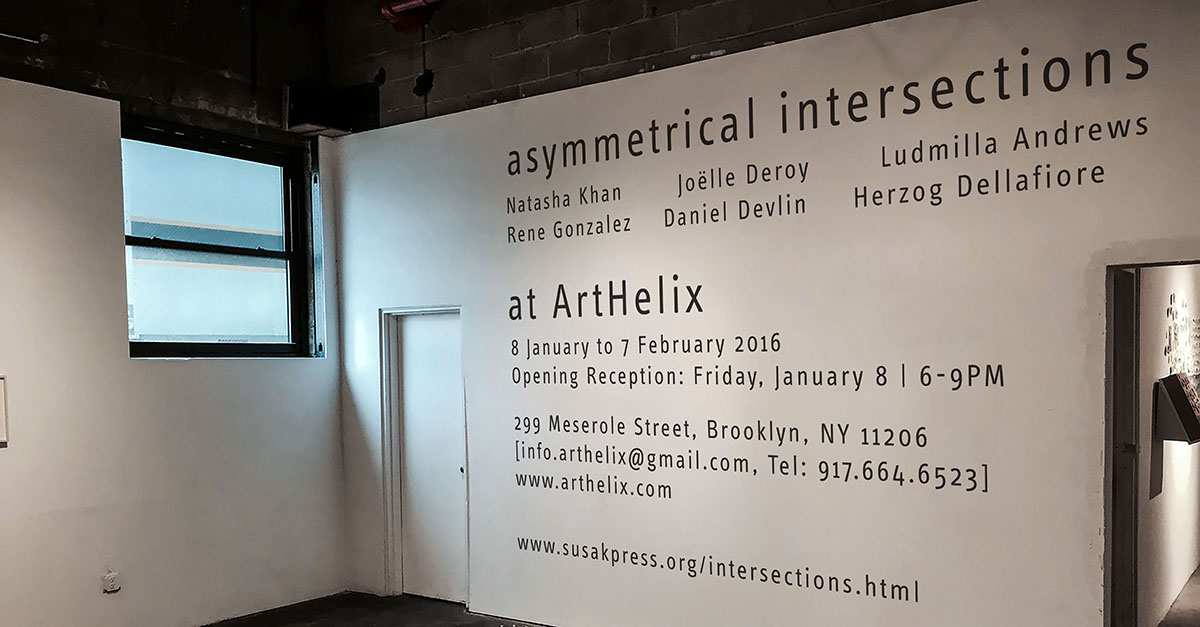
At ArtHelix
8 January to 7 February 2016
Opening Reception: Friday, January 8 | 6-9PM
299 Meserole Street
Brooklyn, NY 11206
[info.arthelix@gmail.com]
[Tel: 917.664.6523]
Gallery Hours:
Saturday-Sunday
12PM – 6PM
and by appointment
asymmetrical intersections
When artistic talents collide they give birth to something utterly mesmerising which holds no permanent place in any artistic era. Adjacent artworks create an uncomfortable conflict that is both beautiful and torturous to gaze upon—yet our egos do not allow us to look away. The divergent space between the work has untouched value; it is a movement in itself; a quasi-divine asymmetrical intersection forged by one artist’s style crashing into another’s; a relationship seldom explored by curators but, rather, avoided. OK… sorry, cut the crap… the only reason these artists are showing together is that they have one thing in common: the fact that they are in some way connected to Peter Hopkins. Peter likes them—on a personal level. And what’s wrong with that? Let’s be honest, the art world is not about talent but about connections, so this exhibition fits seamlessly with SHIM’s underlying aim, which is to be a platform connecting artists and galleries.
- Benjamin Péret insulting a priest
- ArtHelix
- Tash and Eve
- Andre Bezerra
- David, Darcy and Brett
- Wilson Duggan
- Brett’s cracked iPhone
- Peter Hopkins
Natasha Kahn
Kahn makes work with found objects and bits of gaffer tape. The tape curls up at the edges, straining against the material it supports. The work lasts for as long as the tape allows, and then it falls down. It sustains itself. When it gives up materials are reused and recycled, negating the art object as a whole. Her work has its roots in an enquiry with painting and drawing, life and death, and is
the result of unpacking those ideas via many detours.
Natasha Kahn is an artist and freelance editor living in London. She studied at UEL (1992-1995). In 2014, she co-founded DOLPH
(www.dolphprojects.com), a project that focuses on the stuff driving an artist’s practice. Exhibitions include: SKIM, ASC Gallery, London (2015). Bread and Jam III, London (2015). DOLPH: The Directors, DOLPH, London (2015). Sluice__ Auction, The Hospital Club, London (2014). Circus TM, Belmacz, London (2014). Discernable, Zeitgeist Art Projects, (2013).
www.natashakahn.co.uk
www.dolphprojects.com
Joëlle Deroy
“Large cities are a place to work, a place to talk, a place to walk the talk… but also a place to dream, a place to breathe, a place to fly… I am thrilled and enrapted by the essence of the night in large cities, by the hope of a journey, by the promise of a new encounter… And among all cities, I am crowning the City of all cities: New York.”
Joëlle Deroy is a French-American multi-media artist (photography, mixed-media acrylic painting, watercolour, oil painting and ceramic). Trained by painter Sylvia Lark (in U.C. Berkeley, California) and by international artist Yvette Maniglier (Paris, France),
she has exhibited in numerous venues in New York, Southhampton and Miami (USA), Zermatt (Switzerland), Paris and Vallauris (France), London (U.K.) among others: the Ezaïr Gallery (Manhattan), the CUE Art Foundation (Chelsea, NY), AAF (Affordable Art Fair) with Living With Art Gallery (New York), the Museum of the Americas (Miami), The Brick Lane Gallery (London), the Capricorne Gallery (Zermatt), Sassi-Milici Gallery (Vallauris, France). She lives and works in London.
www.joellederoy.com
www.drivingchangewithart.com
Ludmilla Andrews
Andrews currently centres her creative output on abstract drawings informed by the dynamics of human interaction. The process
of refining and defining a set of rules that allow repeat performances is integral to the creation of these drawings, which share common characteristics but are also uniquely individual. Shown in multiples, the drawings re-enforce the notion of constant flux, where the energy of interaction is not a fixed state but has infinite variables.
Ludmilla Andrews is a Dutch-Trinidadian artist who grew up in Scotland and now lives in London. She creates her pieces alongside working as a Learning Mentor at a secondary school. She studied Modern Dance (Swindon and Amsterdam), BA Film & Video at London College of Communication and MA Printmaking at Camberwell College of Arts. Her work has been shown in a variety of group shows (Ofcom, The Mall Galleries, The Chocolate Factory, Morley Gallery, Studio 1.1) and in 2015, as a co-founder of thestromboligroup.
Rene Gonzalez [ELX artist]
Gonzalez’s work explores the idea of contemporary heroes. He paints portraits or scenes that include characters that are known for their controversial views—Richard Dawkins, Neil DeGrasse and Ayaan Hirsi Ali. To him, they represent a critique of individualism, indifference and detachment regarding other people’s suffering, both in the immediate vicinity and globally. These characters are surrounded in landscape, patterning or abstract marks as a symbol of inclusive and open conversation. His use of different mediums convey this sense of dialogue.
Rene Gonzalez has a background in graffiti and mural painting. His influences include: Francesco Clemente, Leon Golub, Barbara Kruger, and Wilhelm Sasnal, given their practice and political subject matter, and comic-book culture.
www.elx-art.com
www.therenegonzalez.com
Daniel Devlin
Method painter, publisher and con-artist. He has been described as a postmodern naïf and a conceptual provocateur, he claims that it has never been his intention to mislead anybody.
www.danieldevlin.con
www.danieldevlin.org
Herzog Dellafiore
Anti-artist, performer and painter. He was active on the London art scene until his breakdown in the mid nineties. He described his state as being lost in the fog of neo-formalism.
– – – – – – – – – – – – – – – – – – – –
Natasha Kahn
Statement
Tape has been a constant in my work for some time. In earlier paintings on canvas, I used it to mask out areas and hem in flat planes of colour. In later work I left it on, using paint-stained bits of masking tape to convey line and structure.
I began using more relevant industrial materials to reflect the architectural subject matter–perspex, laminate, gaffer tape, wood and metal. However, soon the unconscious arrangements of tape that I’d placed randomly by the side during the making process became more interesting than the work itself. These accidental compositions were striking yet ephemeral. I liked that they were directly on the wall and that, although random, were strangely organised. A measured disorder.
The recent gaffer-tape drawings made me think of entropy, and the tendency for all matter to evolve towards a state of uniformity. Tape curls up at the edges, straining against the material it supports. It’s as if the work is relaxing into itself, slowly yielding to a point of perfect equilibrium, before falling off. And it will, in time.
The work sustains itself–the re-used tape becomes recycled in its new form; the transient, concrete installations are short-lived, assembled and re-assembled. The works morph into others through a process of recycling and remaking. Each piece spawns countless others, negating the art object as a whole. Knowing this is a challenge. One that calls on me to eschew all previous schools of thought. Unlearn the past. It is a complete emptying out of the old paintings.
BIO
Natasha Kahn makes work with found objects and bits of gaffer tape. The tape curls up at the edges, straining against the material it supports. The work lasts for as long as the tape allows, and then it falls down. It sustains itself. When it gives up materials are reused and recycled, negating the art object as a whole. Her work has its roots in an enquiry with painting and drawing, life and death, and is the result of unpacking those ideas via many detours.
Natasha Kahn (1973) is an artist and freelance editor living in London. She studied at UEL (1992-1995). In 2014, she co-founded DOLPH, a project that focuses on the stuff driving an artist’s practice. Exhibitions include: SKIM ASC Gallery, London (2015). Bread and Jam III, London (2015). DOLPH: The Directors DOLPH, London (2015). Sluice__ Auction The Hospital Club, London (2014). Circus TM Belmacz, London (2014). Art/Converters! Studio 1:1, London (2014). Discernable Zeitgeist Art Projects, (2013).
www.natashakahn.co.uk
www.dolphprojects.com
– – – – – – – – – – – – – – – – – – – –
STEPPING INTO THE ART DRIVE, with Joëlle Deroy
Statement
Infused and inspired by New York City, London, Shanghai, Paris and Sao Paolo
“No Speed Limit, Simultaneous Realities, and Mind Flexibility are the subjects of my wonder and enduring artistic inspiration.
But all of this could not happen, if it was not for the extraordinary drive of large cities and human ingeniosity.
It is this realization, together with the desire to inspire others creatively in their daily lives, which led me to the creation of Driving Change With Art Ltd, an art think factory operating as an international network of independent partners and creative minds
(London – New York – Paris), of global reach (including China). Its purpose is to drive change and unlock the art world through management consulting with the arts, applied to change management, space, products & media. “
Bio
Painter formally trained in U.C. Berkeley (California) with artist Sylvia Lark (1987), and in Paris (France) with artist Yvette Maniglier (1991 to 1997)
Ceramic work in addition to painting, created a ceramic body of works in Vallauris (South of France) with Francis Milici (Sassi-Milici studio, 2005 to 2007)
Photographer Deroy’s move from New York City to Paris & London (2008) was a turning point in her artistic career, as she embraced photography as an additional mean of artistic expression
Business training graduate of the HEC business school in Jouy-en-Josas (1988 – master degree)
Corporate experience 5 years of international corporate experience in global firms – Deroy developed then her own artistic vision of the corporate world and of how art can be of value to foster innovation and manage change within corporations.
Publication Driving Change With Art: Corporate change management & innovation through Art (Sept 2015)
www.blurb.com
Selected Solo Shows
2013 Bricklane Gallery (London, U.K.)
2012 Advancy Co – “No Speed Limit” (exhibited internationally in Paris, Shanghai, Sydney & Sao Paolo)
2009 Tribeca In Motion – launching of an alternative exhibition place in Downtown Tribeca (New York)
2007 Deroy | Milici: The Painter & the Ceramist – Encounter in the French Tradition of Vallauris (FIAF, NYC)
2006 Ezaïr Galleries (South Hampton and New York City)
2006 In the Rough – sponsored by Douglas Elliman – Media coverage by TV Channel 11 (New York City)
2005 Consulat Français de New York – “Calligraphic Paintings” (New York City)
2004 Joelle Deroy, French/Texan Artist – Solo exhibitor at the 26th international annual ARTEXPO art fair (NYC)
Selected Group Shows
2013 Advancy and PS21 Gallery – “No Material Limit” (Paris, France)
2010 Ceres Gallery – “An Artist Perspective on Transcultural Business Environments” (New York City)
2009 AAF (Affordable Art Fair) with Living With Art Gallery (New York City)
2008 Cue Art Foundation – Conference & exhibition of “Splashes” – (New York City)
2007 Tria Gallery – “Sacred Ways” – (Chelsea, New York City)
2005 Masters’ Mystery Art Show – The Ritz Carlton (Miami Beach, Florida)
2004 Women in the Arts – Latin American Art Museum (Miami, Florida)
Ongoing Gallery Collaboration
2006 – 2012 Sassy-Milici Gallery – Vallauris, France
2006 – 2012 L’Atelier Gallery – Zermatt, Switzerland
1994- 2005 Capricorne Art Gallery – Zermatt, Switzerland
2004 Galerie des Lys – New York City, U.S.A.
www.joellederoy.com
www.drivingchangewithart.com
– – – – – – – – – – – – – – – – – – – –
Ludmilla Andrews
Statement
When a tutor described Ludmilla’s abstract ink and paper pieces as “not something you would expect to be made by a Rasta from Peckham”, he was met with a stunned silenced. Apart from being factually incorrect, there were too many questions bombarding Ludmilla’s brain. Not least, was this a good or a bad thing? Was she dodging her duty to confront the issues of Race, Religion, Politics, Gender and Sexuality or was she standing up for the right to feel free to express herself as an individual in any way that she chose.
In any case the solace in Abstraction proved too strong. Process came to the fore, stripping away the superfluous and creating rules for a game that allowed repeat performances, mistakes absorbed but some still ending in disaster. All of this underpinned by a focus on the internal and external dynamic descriptions of human interactions.
The simplicity of the final images belie the huge range of decisions made, some considered at length and some spontaneous. The joy of making these drawings is in Ludmilla’s recognition that these decisions are informed by all that came before. Cultural influences, but also in the dabbling of other art forms that no longer feel abandoned but now contribute their sensibilities. An awareness of movement and dynamic impact through Dance, the editing out to create a stronger meaning through Film, the care of the mark-making through Printmaking and essentially, the need to listen intently (in this case through looking) practised daily by Ludmilla in her job as a Learning Mentor.
– – – – – – – – – – – – – – – – – – – –
Rene Gonzalez – ELX Art Artist
“My work explores the idea of contemporary heroes. I paint portraits or scenes that include characters that are known for their controversial views on themes like science vs. religion, free will, morality and geo-political phenomena and to me they also represent a critique of individualism, indifference and detachment regarding other people’s suffering, both around us and globally.
I create environments for characters such as Richard Dawkins, Neil DeGrasse and Ayaan Hirsi Ali, as well as hip-hop musicians like the Wu Tang Clan, surrounding them in landscape, patterning or abstract marks as a symbol of inclusive and open conversation.
I use different mediums such as markers, acrylics, oil paints, stencils, rollers and spray paint, in order to convey this sense of dialogue. I am also interested in the dialogues between patterning, abstract mark making and figurative forms that animate further ideas of conversation between transhistorical aesthetic languages.
I work from photography and pop culture imagery, influenced by the aesthetic languages of advertisement, marketing, religious iconography and classical representations of power in contemporary and historical visual culture.
My influences include Francesco Clemente, Leon Golub, Barbara Kruger, and Wilhelm Sasnal, given their practice and political subject matter. Other important influences are comic book culture and my background in graffiti and mural painting.”
www.therenegonzalez.com
www.elx-art.com
– – – – – – – – – – – – – – – – – – – –
Just Begin, Daniel Devlin!
by Jennifer Viviani [2006]
One must not spend time doubting, one must just begin’ is the opening slogan for one of Daniel Devlin’s films, and yet Devlin never really begins any art. In fact, Devlin habitually avoids making any art, preferring rather to languish in the Ur stages of the art process. He frets not about what artwork he will make but rather indulges himself in neurotic self-analysis about what art itself is. In the video Conversation, Devlin and his Doppelganger (the artist plays both characters) sit around drinking coffee, one of the Devlins boring the other with rhetorical questions regarding the definition of ‘art’. Devlin 1 ponders one such definition he has read as ‘culturally significant meaning skilfully encoded in affecting sensuous medium’, a phrase he muses over until he drives Devlin 2 so crazy that he throws a glass of water over him. With a background soundtrack of canned audience laughter, booing and hissing, the philosophical questioning here is reduced to the slapstick humour of an American sitcom. Devlin is not really interested in finding answers; if he were, then he would have to get on and make some art, not lazy conversation.
Devlin is a self-confessed cynic. His videos are full of references to belief, and more specifically his inability to believe in himself as an artist or really to believe in art. He suggests that if he might only pretend to act like an artist, he might successfully pull off the illusion of being, or at least feeling, like an artist. In Window Tate, for example, Devlin Photoshops his name over the entrance to Tate Modern, replacing for a brief moment the existing exhibition banner for Frida Kahlo. He has also created a bogus magazine advert publicising the upcoming Recent Paintings exhibition of Herzog Dellafiore, a fake artist created once again by Devlin. In both cases, he neatly sidesteps the responsibility of making his own work, in the first instance allowing his name on the exhibition banner to stand in for any real exhibition, in the second passing off a badly disguised Bruce McLean painting as his, or rather his pseudonym’s, own. Each time, Devlin conceives of a seductive and plausible decoy to deflect the attention of the audience away from the gaping absence of his own work.
Devlin is, then, an expert in making meta-artworks: objects and statements that explain art or function as its accessories or souvenirs, but can never be taken for the artwork themselves. He has even created his own wikipedia entry with links to his publishing company Susak Press and Susak Expo, an bi-annual ‘art event’ on the Croatian island of Susak initiated by Devlin last year, and which, despite the grandiose internet statement (since erased) favourably comparing the latter to the prestigious Venice Biennale, will probably not have a second outing. Adding to the smokescreen of misinformation, Devlin also claims to be part of a group called the Young Chelsea Artists (note that this neologism doesn’t receive wikipedia legitimisation). Like the Emperor’s New Clothes, Devlin attempts to expose the gullibility of art aficionados when in fact the humiliation should be his – for having nothing to show but empty promises and an aptitude for self-aggrandisement.
In another attempt not to make any art, and in fact sadistically to stop others from doing so, Devlin asked the artists he’d invited over for Susak Expo to paint all the wheelbarrows on the island. Taking advantage of the goodwill of the artists in his charge, he also demanded the gratitude of the locals: he made them pose for photographs alongside the new garish orange wheelbarrows that they had never asked to have decorated. Devlin has reversed the well-meaning (if often misguided) intentions of Relational Aesthetics: he constructs scenarios that cynically mimic the utopian model of reciprocal inter-human relations, all the while rendering the model completely meaningless with useless gestures and the exploitation of others for personal gain.
Fortunately for Devlin, he has just enough charisma, just enough hint of vulnerability, to fool his audience into believing in the sincerity of his soul-searching, the real agony behind his tormented artist act. In the first scene of Dokumentary, we find Devlin sitting in a darkened room, face obscured in the shadows. With muffled voice, Devlin makes a pathetic plea of victimhood like the reformed criminal in a crime investigation series: ‘I never intended to cause any harm to anybody… It was never my intention to mislead anyone.’ In a society that raises the bar ever higher for personal achievement and ambition, failure becomes an acceptable, even desirable outcome to hopes and dreams, and Devlin’s work relies on our ability to empathise with his constant failures. Yet when, like Devlin, one tries very little to achieve anything, failure becomes a reassuringly inevitability, an effortless alternative to the stressful expectations that result from accomplishing goals.
When Francis Fukuyama declared the end of history in 1989, he also exposed the inherent limitations of postmodern art, an art doomed to recycle itself. All that had been hailed as achievements of postmodern thought – an end to the tyranny of originality, an end to fascist ideology – was revealed to have an unpleasant corollary: an end to the possibility of change. In the 21st century, then, it’s no longer feasible to appropriate postmodern strategies wholesale without appearing to support the status quo, a position increasingly untenable in a new century blighted by violence and intolerance. Devlin’s practice, however, relies on pilfering and recycling art from the past. He re-enacts past artworks – Bas Jan Ader’s Fall, for example, in which the artists cycles straight into a canal – in the manner of the worst pop music cover version: as a vulgar marketing ploy. He usurps the romantic, tragic status of Jan Ader in order to win the compassion and respect of which he is so undeserving.
Devlin appropriates the nihilism of late postmodernism. Like many failed artists, he wants to be as cool as Martin Kippenberger: liberally helping himself to other artists’ work, taking control of his means of distribution and communication. Yet while Kippenberger’s anarchic production of his own catalogues, invitation cards and posters showed up, by comparison, the conservativeness of art design, Devlin’s imprint, Susak Press, is a tightly controlled propaganda machine that attempts to close off any critical dialogue about his work. Like the inflated wikipedia entry written by himself, Susak Press’s publications contain mostly essays about the artist commissioned by the artist – lofty words and flattering references that seek to fill out the bare bones of Devlin’s emaciated practice.

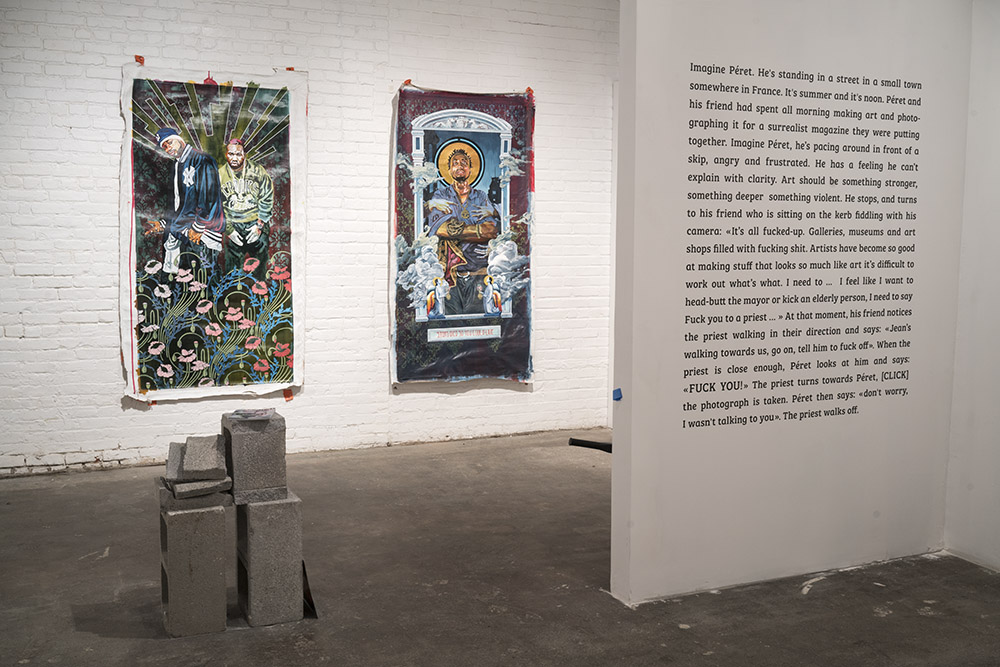
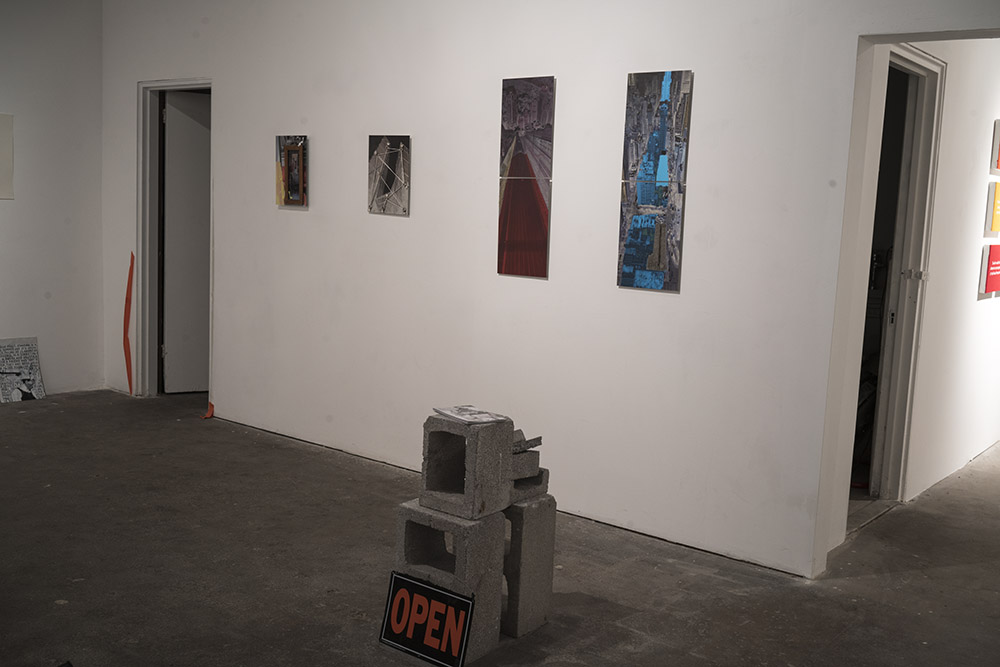





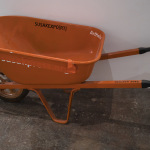



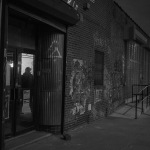
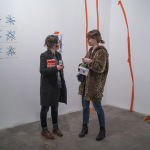
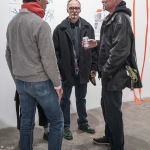

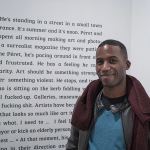
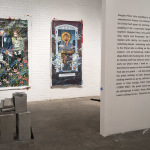
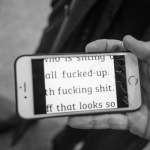
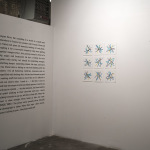
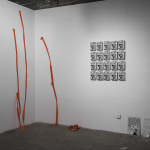


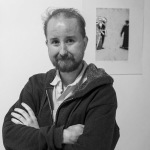
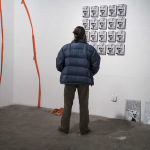
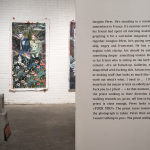


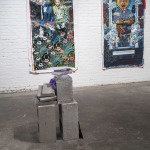
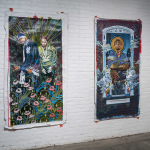

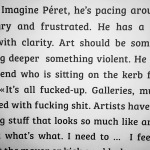
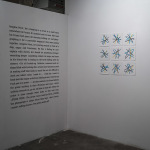


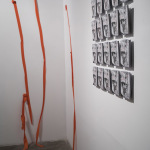
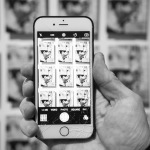


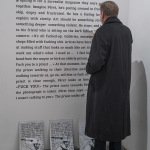

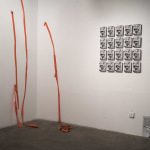
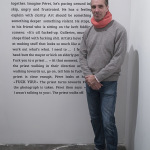
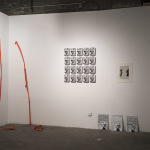



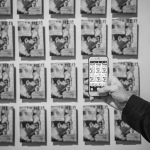
Leave Comment :